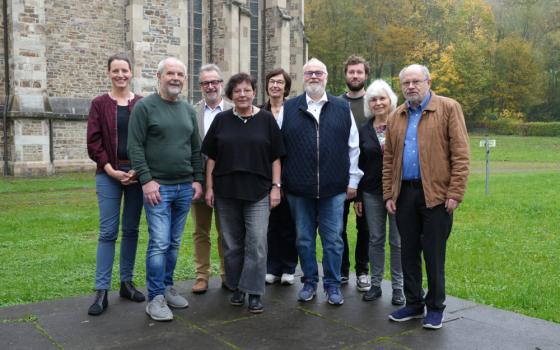COMMENTARY
Faced with masses of demonstrators clamoring for change, panicky Arab dictators and their spokesmen were quick to blame outsiders. They pointed fingers at “foreigners,” “foreign influence,” “opposition elements that live abroad,” “the West.”
With those words the Arab rulers sought to deny that their people had launched homegrown revolts.
Their defensive reflex isn't new in power relations, although Colonel Gaddafi's claim that Osama bin Laden provided Libyan protesters with hallucinogenic drugs added a novel dimension. Groups that have ruled by force and coercion have long believed, or pretended to believe, that the people under their yoke were content and loyal. Any sign of discontent must have been stirred up from the outside.
A similar mindset existed in the white American South of the 1950s and 1960s. White Southerners pointed fingers at “outside agitators.” With that label Southern whites dismissed African American actions for racial equality as alien-inspired.
Marches, sit-ins, the bus boycott were seen not as homegrown resistance but as the work of sinister outsiders from New York and other such radical places. “Our nigras are happy,” went a common, if self-deluding refrain.
In the North, “radical” New York began to receive intense scrutiny from the FBI as the Cold War brought the notion of outside agitators to a different level. Soviets threats to Western Europe, the Communist takeover of China, and the Korean War had produced a national consensus about communism, aptly expressed by Senate liberals including Hubert Humphrey and Paul Douglas.
They introduced a bill in 1950 on espionage and sabotage which singled out the Communist Party and declared communism “a revolutionary political movement whose purpose it is, by treachery, deceit, infiltration...espionage, sabotage (and) terrorism...to establish a communist totalitarian dictatorship in all the countries of the world.”
Members of the U.S. Communist Party were seen as subversive foreign agents within our borders. They were outside agitators who happened to live here, “boring from within” in the watchword of the time, to be hemmed in by laws and the FBI. Even their legal activities would taint any movement they entered.
Suspicion of citizen action, even by some in the press, was widespread. In 1960, shortly after four African American students sat in at a whites-only lunch counter in Greensboro, North Carolina, three of them spoke at a press conference in Washington. I attended. Three reporters showed up.
As I recall, they were from the Associated Press, United Press International, and The Washington Post. All three posed the same question, repeatedly and in various forms: Who put you up to this?
The reporters had trouble believing these young blacks had undertaken such a bold action on their own, without outside direction. One of the students mentioned the encouragement they had received on their campus at North Carolina A&I.
Fellow students from Africa and Hungary had asked the blacks how they could continue to live under enforced segregation without doing something about it. In fact, the Hungarians were refugees from the brutal 1956 Soviet invasion of their country. Some of the “outside agitators” in this landmark action turned out to be stalwart anti-communists.
J. Edgar Hoover's claim that Communists were infiltrating the civil rights movement gave him the lever to wiretap Martin Luther King Jr.
“His hatred of King,” wrote author Nick Kotz, “fueled by racism, drove Hoover's relentless five-year campaign to destroy the minister as a respected national leader.”
The presence of two alleged members of the Party among King's advisers allowed Hoover to legitimize his campaign. The FBI director leaked slanted information about King to Presidents Kennedy and Johnson and selected journalists and members of Congress.
A month before the 1963 March on Washington, the FBI sent a top secret memo to President Kennedy and Robert Kennedy on the role of the Communist Party in the “current Negro revolution.” King, on the other hand, pointed to “the amazing lack of success that communism has met in attracting the Negro.”
Where Hoover saw Moscow-backed outsiders, black Americans found leaders within their churches.
By the 1960s the Communist Party was a near-empty shell where covert FBI agents may have been the biggest dues-paying group. A few Party members had spied for the Soviets. The crime of the rest was political blindness, believing what they read in The Daily Worker.
Nevertheless, the FBI cast a wider net, viewing even moderate citizen movements as suspect. Here I can speak from experience. An undercover FBI agent was one of perhaps a dozen people attending a home meeting in Skokie, Illinois, in 1961 when I spoke there as a staffer of the peace group SANE.
Later I learned of this surveillance, which lasted for years, through the Freedom of Information Act. My suspicious topic in 1961 had been the need for a nuclear test ban treaty, advocated by President Kennedy. Government surveillance of activists reached a peak during the Vietnam War. The government probably thought we were taking marching orders from Hanoi as well as Moscow.
Fortunately, those days are over, here if not in the Mideast. No Americans believe that either the tea partiers or the pro-union Wisconsin demonstrators are prompted from abroad.
Our political struggles are grounded in domestic realities, and we cope without outside guidance. As do the brave young rebels of the Arab world, denied freedom and dignity until they changed history.
[Sanford Gottlieb worked in the peace movement for 34 years. He is the author of Red to Blue: Congressman Chris Van Hollen and Grassroots Politics.]



